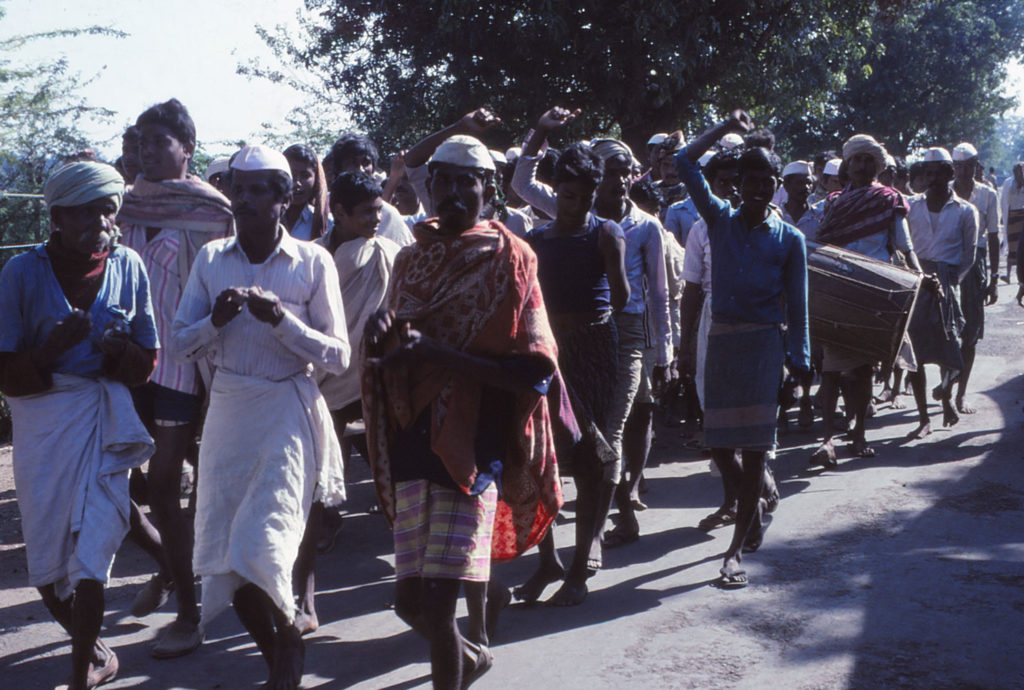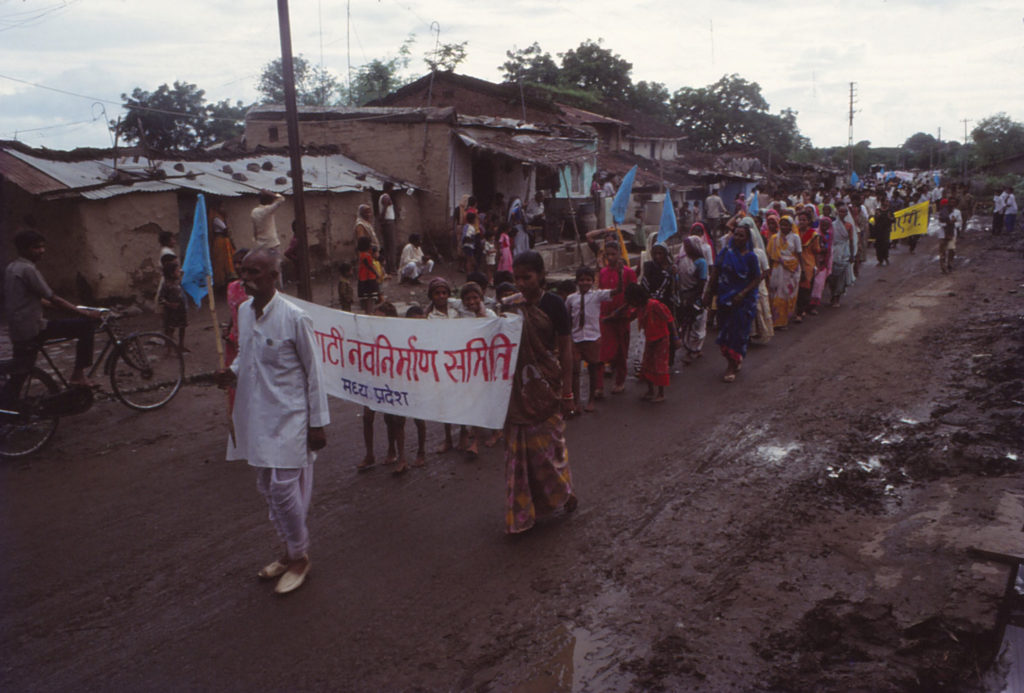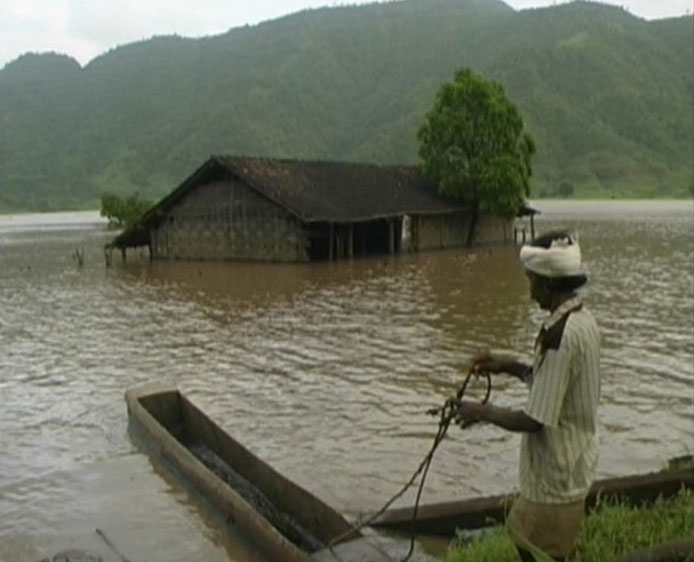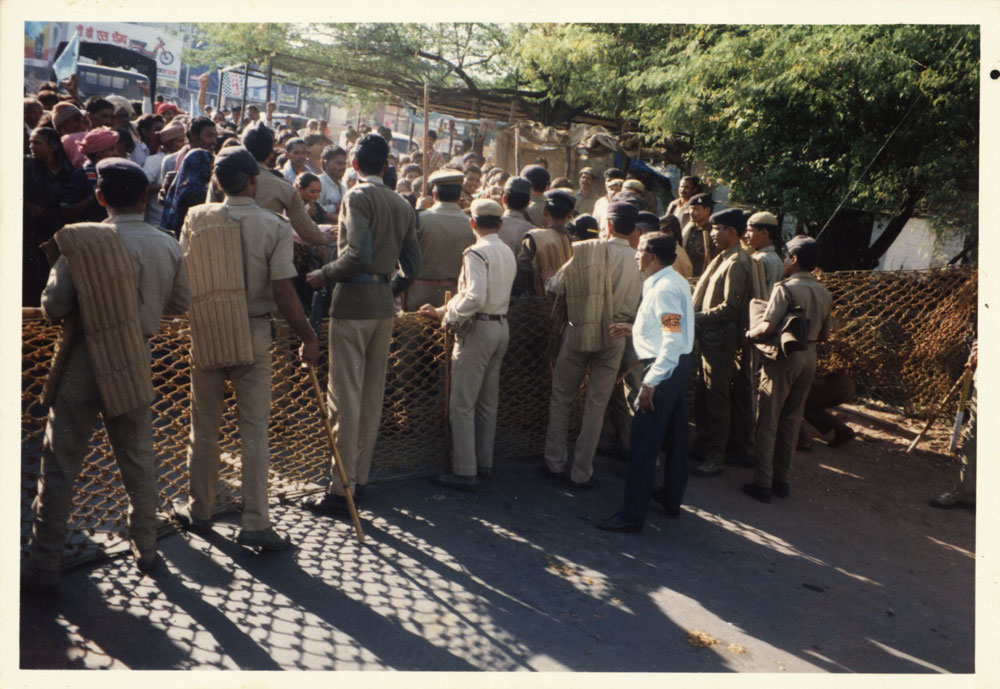Oral history is as much an act of resistance as a means to archive people’s history. This website shares people’s histories of the mass resistance against the Sardar Sarovar Project (SSP) on the River Narmada in Western India in the form of oral histories of the people who have been directly involved in the movement.

The oral histories of the Narmada struggle are being shared here in Audio/Video format. Some of the oral histories have already been published in the form of a book, and other books are planned.
The several hundred hours of oral history narrations that Nandini Oza has recorded in close to 80 interviews will be shared here in stages and after due selection and editing.
For example, early history and evolution of the struggle, women leaders and activists, impact of submergence and so on. Other interviews will be shared as stand-alone narrations.
First Postings – Early History of the Movement
To begin with, the early history and evolution of the Narmada struggle has been put up here in the voices of important players of the struggle during its early years. While the more recent developments in the Narmada struggle are relatively better known, the early resistance against the SSP since 1961 and its history is not so known. Therefore, it is this that has been put up first on the site.
The early history section consists of select interviews of people who have been active in the struggle, some since 1961 to some in the late seventies and early eighties in the Nimad Bachao Andolan and Narmada Ghati Navnirman Samiti to the subsequent formation of the Narmada Dharangrasth Samiti in the mid eighties and the Narmada Bachao Andolan (NBA) in the late eighties.

First Postings – Impact of Submergence

Besides interviews that explain the early years of the struggle, short and select clippings excerpted from longer interviews have been put up of different people giving glimpses of the impact of submergence by the dam on the people and the Narmada valley.
Second Postings – Strategies of the Narmada Bachao Andolan
The interviews put out in this section offer comments, insights and narrations of personal experiences related to the many strategies and tactics adopted by the Narmada Bachao Andolan (NBA) during its more than three decades as a mass resistance movement. These select voices include senior leaders, activists and ideologues of the NBA. The interviews given here are excerpts from mostly much longer interviews, and consist of those parts where they talk about their experiences and observations on the strategies of the struggle and the processes in building a powerful people’s movement.

Second Postings – Women Leaders of the NBA
The Narmada Bachao Andolan (NBA) has always had women, both from within the affected communities and activists from outside the valley at its forefront. Be it in Gujarat, Maharashtra or Madhya Pradesh, women have led the struggle from the frontlines and in the process borne the brunt of state repression. Many were jailed, beaten and a few were even sexually abused for their opposition to the Sardar Sarovar Project (SSP) and the development model it represents. The interviews presented here are the voices of some key women leaders of the movement narrating their experience of the struggle and the unique and diverse roles played by women in the movement.
These interviews confirm what a senior activist and writer Rahul Banerjee says about the adivasi women leaders of the NBA, “adivasi women activists, they are all organic intellectuals who have contributed much to dispel the myth that the NBA was a creation of urban romantics.”
Third Postings – Life By The Narmada
The stalwarts of the Narmada Bachao Andolan (NBA) share in the audio-video clips the many facets of the mighty Narmada River before the building of the Sardar Sarovar dam. For the people of the Narmada Valley, the river Narmada is a goddess or the mother. It is either Namami Devi Narmade or Narmada Maiya. The river Narmada is possibly the only River where every year, thousands of people go on its circumambulation – the Narmada Parikrama, from its origin at Amarkantak to its mouth and back. The villages on the banks of the Narmada consider providing food and shelter to the parikramavasis (those taking the spiritual journey of circumambulation of the Narmada) a pious act.
The voices along with the photographs of the river are important to understand the significance of a free flowing river and help understand how intertwined with the river Narmada the lives of the people were. These interviews help understand how changing a free flowing river into a reservoir of stagnant water by building a mega dam destroys the very way of life of people who are the descendants of one of the oldest river valley civilisations. These voices are a must listen for all those who wish to understand the river Narmada when it was flowing free before the building of the Sardar Sarovar Dam.
Third Postings – Short Clips
While it is important to listen to the longer interviews on this website, there are topics of specific interest to people raised by the Narmada Bachao Andolan that are shared here as short clips. This is for quick and easy reference on important topics such as lands of the adivasi people acquired for project colony, the Kevadia Colony being diverted to Statue of Unity related tourism; the challenges women oustees face in the rehabilitation sites for being women; the impact on the Narmada River by the dam and so on.

Format of Presentation
The interviews have been recorded in purely audio format, but are being presented here in a video format, with audio files converted to video and some photographs added. Subtitles have been provided in English (where the language of the interview is other than English) and in Hindi (where the language of the interview is English).
The photographs have been collected from different people and organisations. The profile pictures of interviewees are taken by Nandini Oza.
Editing
Since several of these interviews also talk about aspects of the struggle other than those topics listed above, these interviews/oral histories have been edited to focus on important information concerning the topics listed above.
Editing has also been done to avoid repetition and to maintain continuity in narration, events and timeline. Care has been taken to ensure that the meaning, thrust and emphasis of the original narration has not been affected by the editing.

Translations
Since the interviews have been taken in seven different languages and dialects, translation has been a major and difficult component. Some of the interviewees speak in more than one, sometimes even three languages and/ or dialects in a single interview. The translations from these languages into English have been done by Nandini Oza and some of the interviews have been translated through professional help. Help of professionals has been taken for translation of interviews from English to Hindi and from Pawari to English and Bhilali to English also.
Translations are as close as possible to the spoken language. At a few places where a word is not audible or its exact meaning is difficult to bring out, the gist/meaning of what has been spoken has been maintained. Oral history is a participatory history and it is hoped that those who listen to it help identify the exact translation of the word that may have been missed.
Subtitles
As mentioned above, sub-titles have been provided. However, sub-titling has a limitation in that the speeds of the spoken words (audio) normally do not match the speed with which one reads.
So sub-titles need to be done in lesser words than those contained in the spoken narration particularly where the speed of narration is fast.
Special care has been taken to see that the meaning of what is spoken is maintained.
Finally, this is an attempt to bring before the people of India and the world, the voices of the people who have been key players in one of the most powerful people’s movements in India but are less known and heard. This is the first phase of the web-site and Nandini Oza will be putting up more material with availability of time and resources in the future.